Day 2 :
Keynote Forum
Viswanathan Subramanian
Market Segment Manager,Aerospace and Defense, Germany
Keynote: Emerging Trends in Communication Satellites & Related Test Solutions
Time : 10:00-10:45
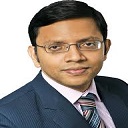
Biography:
Viswanathan Subramanian completed his PhD Degree in High Frequency Engineering in 2009 in Berlin, Germany He has authored or co-authored more than 50 technical papers in peer reviewed conferences, journals and also holds an international patent. He has been an official Reviewer for the journals “IEEE Microwave and Wireless Components Letters” and IEEE Transactions on Circuits and Systems”. Since 2012, he is working at Rohde & Schwarz, Munich in various positions focusing diverse test solutions for aerospace and Defense and high frequency applications. His research interests are in design, testing and characterization of systems to mm-Waves and above
Abstract:
With an increasing demand on high data rates, capacities and wireless connectivity requirements in both personal and business/enterprise level (for mobile/wireless communications/connectivity) in almost all geographic regions and industrial sectors, the wireless communication landscape in general is undergoing a major transition. Aiming at an interoperable and unified solution to all these demands in a long run, transitions at both the technology as well as the infrastructure and service levels are expected. 5G and IoT are some of the major industry initiatives in these directions. To support this transition as an important complement, traditional communication satellites are also going through major technology level changes across their GEO (geostationary earth orbit) and NGSO (non-geostationary orbits) launches. In this presentation, a look into communication satellites that form a major subset of the global operational satellites, related emerging industry trends, technology drivers and Rohde & Schwarz test solutions addressing them will be summarized. As major emerging trends, high throughput systems (HTS) to very high throughput systems (VHTS), large-scale NGSO satellite constellations are considered. Among the technology drivers, topics such as phased array systems and their potential advantages across the satellite industry eco-system will be covered. To address these trends and technology level test challenges from component, assembly level testing to payload subsystem and satellite manufacturer level testing, a wide range of test solutions from Rohde & Schwarz will be presented. System level tools such as satellite link planner, satellite communication system interference monitoring/detection and state-of-the-art Ku-band uplink solutions will also be covered.
Keynote Forum
Romeo Kienzler
Global Chief Data Scientist, Deep Learning/AI Engineer, Switzerland
Keynote: The Satellite Revolution -when makers meet aerospace
Time : 11:00-11:45
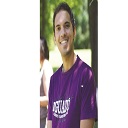
Biography:
Romeo Kienzler is the Chief Data Scientist of IBM Watson IoT and as IBM Certified Senior Architect he helps clients worldwide to solve their data analysis challenges. He holds an MSc (ETH) in Computer Science with specialization in Information Systems, Bioinformatics and Applied Statistics from the Swiss Federal Institute of Technology. He works as an Associate Professor for artificial intelligence at a Swiss University and his current research focus is on cloud-scale machine learning and deep learning using open source technologies including R, Apache Spark, ApacheSystemML, ApacheFlink, DeepLearning4J and TensorFlow. He also contributes to various open source projects. He regularly speaks at international conferences including significant publications in the area of data mining, machine learning and Blockchain technologies.
Abstract:
For decades getting up a satellite into orbit was a multimillion project. Advances in technology brought this down to a fraction of the cost. This keynote presents the most promising CubeSat and nanosat projects and explains how to build your own CubeSat and what it takes to bring it into orbit.
- Expedition Four to the International Space Station
Location: Holiday Inn Express Amsterdam – Arena Towers.
Session Introduction
Daniel Bursch
Former NASA astronaut, Chair Professor, Naval Postgraduate School, USA
Title: Expedition Four to the International Space Station
Time : 11:30-12:15
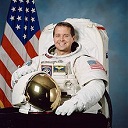
Biography:
Daniel Wheeler Bursch (born July 25, 1957) is a former NASA astronaut, and Captain of the United States Navy. He had four spaceflights, the first three of which were Space Shuttle missions lasting 10 to 11 days each. His fourth and final spaceflight was a long-duration stay aboard the International Space Station as a crew member of Expedition 4, which lasted from December 2001 to June 2002. This 196-day mission set a new record for the longest duration spaceflight for an American astronaut, a record simultaneously set with his crew mate Carl Walz.Their record has since been broken, and as of 2016 it is held by Scott Kelly, who flew a 340-day mission during Expeditions 43, 44 and 45. Awarded the Defense Superior Service Medal, NASA Space Flight Medals, the Navy Commendation Medal and the Navy Achievement Medal. Distinguished graduate, U.S. Naval Academy and U.S. Naval Test Pilot School.
Abstract:
Dan Bursch will present pictures and share stories of his experience of spending 6.5 months off the planet as a member of the Expedition Four crew to the International Space Station from December 2001 to June 2002.
Matthew Crook
Lecturer, Naval Postgraduate School Space Systems Academic Group | USA
Title: SATCOM Past, Present and Future
Time : 12:15-12:45
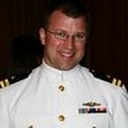
Biography:
Mathew Crook is working with Naval postgraduate school Space Systems Academic Group in USA
Abstract:
SATCOM Past, Present and Future
Alex Bordetsky
Professor, Graduate School of Operational and Informational Sciences, USA
Title: Mesh Networking
Time : 12:45-13:15
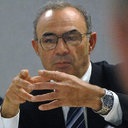
Biography:
Alex Bordetsky is tenured Professor of Information Sciences at the Naval Postgraduate School. He also holds dual appointment with the Space Systems Academic Group at NPS. Professor Bordetsky is Director of the NPS Center for Network Innovation and Experimentation (CENETIX). He is a recipient of prestigious Robert W. Hamming Interdisciplinary Research Award for the pioneering studies of collaborative technologies and adaptive networking and the Fulbright Senior Fellowship Award for the experimental studies of unconventional maritime networking. Dr. Bordetsky is the Principal Investigator for the renowned TNT MIO Military-Academic Experimentation Campaign, which is now in transformation to Littoral and Maritime-Land CWMD operations study. His research accomplishments are featured in the AFCEA SIGNAL Magazine, Via Sat, USSOCOM Tip of the Spear Journal, Pentagon Channel, and Fulbright Newsletter.Dr. Bordetsky publishes in major IS journals including Information Systems Research, Telecommunication Systems Modeling and Analysis, International Journal of Mobile Wireless Communications, and International Command and Control Research Journal.
Abstract:
We discuss the NC3 Networking Experimentation Modules for studying Trans/Post Resilient Mesh Networking solutions They represent a set of hands-on field experiments focused on integration and operation of Trans/Post Resilient Mesh Networks( TP-RES MESH). The TP-RES MESH will utilize maritime-land self-forming mesh networking enclaves, R/N sensors, cubesats, rapidly deployed stratospheric aerial nodes , and links to partner agency/nation assets. Geographically, the experimentation area will span from places like Offutt, Barksdale, or Hanscom, to the assisting sites in SF Bay and Camp Roberts. The series of TP-RES MESH experiments, conducted by students quarterly, will serve as field laboratories to support the TR-RES MESH NOC class and related NC3 certificate studies
Derek Hall
Department of Mechanical and Aerospace Engineering | USA
Title: Nuclear Command and Control using Quantum Key Distribution for Encrypted Communication
Time : 14:00-14:30
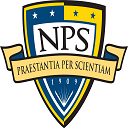
Biography:
Major Derek Hall is a graduate of the University Wisconsin Whitewater and commissioned through ROTC as a Communications Officer. Shortly after commissioning, he was selected for undergraduate navigator training and he graduated as an Electronic Warfare Officer. He was assigned to the RC-135 at Offutt AFB, where he deployed 15 times for over 700 days to locations worldwide. During that time, he rose to Evaluator Mission Commander and attained a Mater's of Engineering degree from the University Nebraska Lincoln. Currently he is working on his Engineering Doctorate with an emphasis in Nuclear Weapons Effects Policy and Proliferation through Naval Postgraduate School.
Abstract:
Quantum key distribution (QKD) has the potential to provide nearly impregnable secure transmissions, increased bandwidth, and additional redundancy for nuclear command and control communication (NC3). While QKD is still in its adolescence, the manner in which QKD should be used for NC3 must be charted out before it can be engineered, tested, and implemented for operations. This presentation will describe how QKD works, its pros and cons, and theorize how best a QKD system would be implemented.
Christopher Pace
Department of Mechanical and Aerospace Engineering | USA
Title: Laser Communication
Time : 14:30-15:00
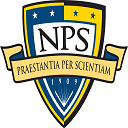
Biography:
Major Pace has completed a Bachelor of Science Degree in Systems Engineering Management from the United States Air Force Academy and a Masters Degree in Aeronautical Science from Embry Riddle Aeronautical University. He is currently enrolled as a student at Naval Postgraduate school (NPS) and has completed a certificate in Nuclear Command and Control Communications (NC3). Maj Pace is currently serving as the Assistant Director of Operations and U-2 Instructor pilot, for the 1st Expeditionary Reconnaissance Squadron
Abstract:
Laser communication has been postulated on since the early 1970s however it has taken until the past 5-10 years to make any significant contribution to lasers or optical communication. This is largely since RF communication became so easily available and inexpensive to employ. The increase in demand for greater throughput and bandwidth for things like: steaming video or hyperspectral imaging requirements, has really pushed laser communication to become a necessity for a variety of applications, but especially so for deep space communication. Laser communication benefits include overcoming shortfalls in bandwidth and throughput, it all but eliminates the limitations associated with specific frequency usage, and it can often be manufactured in a way to save on weight and power requirements for communication system. All that being said there are several issues that optical communication/laser systems must overcome as the technology matures; this includes: pointing stabilization and long-range usage where RF communication might still be the best solution. Regardless it is clear that in order to continue to progress and explore deep space laser communication technologies are required
IAN Kurtz
Air Force Institute of Technology , USA
Title: Russian strategic modernization
Time : 15:00-15:30
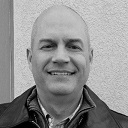
Biography:
Ian Kurtz is a doctorate candidate and instructor for the Air Force Institute of Technology at Kirtland Air Force Base in Albuquerque, New Mexico. Ian retired from the USAF after 22 years of service in 2008. In addition, he holds two Master's degrees and teaches part time for the University of New Haven. Ian is married with two children and enjoys travel, exercising, and spending time with his famil
Abstract:
Russia has, for several years, committed many millions of rubles modernizing their nuclear arsenal. In addition to enhancing the capabilities of their nuclear triad, they have also began thinking outside the box by creating new capabilities.
Jason Lang
Missouri State University, USA
Title: Applying Kahn and Schelling Cold War principles to Cyber
Time : 16:15-17:45
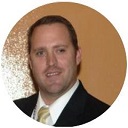
Biography:
Jason is the USSTRATCOM Service Owner for Training, Exercise and Experimentation services and leads the CMD's technology integration laboratory. He has 15 years’ experience working on Government Information Systems and 16 years within the Aviation Maintenance domain. Jason completed a master’s degree from Creighton University in Information Technology Leadership and is currently working towards a Master’s degree on Defense and Strategic Studies with Emphasis in CWMD at Missouri State University Washington, DC area campu
Abstract:
Nuclear deterrence, historically conceptualized through mutual assured destruction, has been the foundation for the delicate balance of power among nations. Advancements in technology in the last two decades since the Cold War, have changed the landscape significantly and has forced a relook into how equilibrium can be achieved. Within this new environment, the question becomes how to achieve ambiguity, through both offensive and defensive non-kinetic means, towards a steady-state of equilibrium. To truly understand the impact of technological advances and a way forward, it is imperative to revisit the original concepts of Kahn and Schelling on nuclear deterrence theory, but through a modern lens.
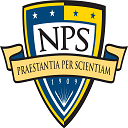
Biography:
Abstract:
The 9/11 Commission made numerous recommendations to the American people about how to rectify the problems that allowed the terrorist attacks on the US Homeland to occur. Congress implemented reform in the Intelligence Reform and Terrorism Prevention Act of 2004 (IRTPA), however because of the way the law was written and the policies constructed to implement the law, challenges and stovepipes still remain. This paper will look into the following implemented recommendations of the 9/11 Commission: creation of the Director of National Intelligence and changes to information sharing, and whether these changes have made the intelligence enterprise more effective
- SATCOM Past, Present and Future
Location: Holiday Inn Express Amsterdam – Arena Towers.
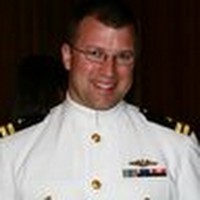
Chair
Matthew Crook |
ecturer, Naval Postgraduate School Space Systems Academic Group |USA
- Mesh Networking
Location: Holiday Inn Express Amsterdam – Arena Towers.
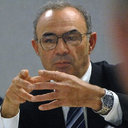
Chair
Alex Bordetsky
Professor, Graduate School of Operational and Informational Sciences | USA
- Nuclear Command and Control using Quantum Key Distribution for Encrypted Communication
Location: Holiday Inn Express Amsterdam – Arena Towers.
Chair
Derek Hall
Department of Mechanical and Aerospace Engineering | USA
- Laser Communication
Location: Holiday Inn Express Amsterdam – Arena Towers.

Chair
Christopher Pace
Department of Mechanical and Aerospace Engineering | USA
- Russian strategic modernization
Location: Holiday Inn Express Amsterdam – Arena Towers.
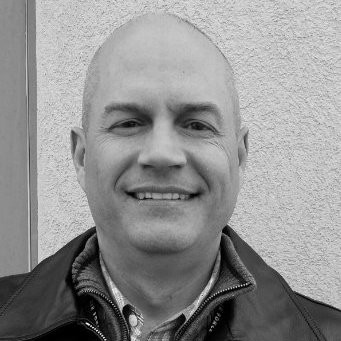
Chair
IAN Kurtz
Air Force Institute of Technology | USA
- Relationship of MILSATCOM Architecture Acquisition and Program Requirements
Location: Holiday Inn Express Amsterdam – Arena Towers.
Chair
Erin Lopez
Graduate School of Operational and Informational Sciences | USA
- Applying Kahn and Schelling Cold War principles to Cybe
Location: Holiday Inn Express Amsterdam – Arena Towers.
Chair
Jason Lang
|Missouri State University | USA
- Wireless &Satellite Communications
Location: Holiday Inn Express Amsterdam – Arena Towers.
Session Introduction
Avery Snyder
Maj, USAF,AIR UNIVERSITY , USA
Title: Electromagnetic Pulse: Importance to Deterrence and Dissuasion
Time : 11:45-12:15
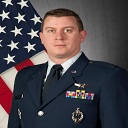
Biography:
Avery Snyder has a B.S. in architectural engineering, electrical systems design, from the Milwaukee School of Engineering, and an MBA from Liberty University. He is a current graduate student pursuing a master of military and operational art and science in joint warfare at Air Command and Staff College and a MS in systems engineering, nuclear command, control, and communication, at Portland State University. He leads the Electromagnetic Pulse (EMP) Programat Air Force Global Strike Command, the Air Force lead command. He has a wide variety ofexperience in nuclear operations, plannning, training, inspections, standardization and evaluation, and other areas.
Abstract:
Discussion on deterrence is nearly always focused on threat of retaliation, such as mutually- assured destruction. Threat of retaliation relies on convincing the deterred of both capability and will to retaliate; reduction of either diminishes the threat. This concept describes deterrence by punishment, but there is a complimentary form, deterrence by denial, also known as dissuasion. This research presents deterrence by denial on equal footing with deterrence by punishment, and presents an equation similarly related to convincing the dissuaded of resilience to and protection against attack. Further, defense is presented as a product of deterrence and dissuasion. Dissuasion is an important concept; it is necessary to understand how U.S. vulnerabilities, such as civilian critical infrastructure, can undermine national defense through its diminishing influence on dissuasion. Critical infrastructure, such as national electric power grids, are susceptible to electromagnetic pulse events, both man-made and naturally-caused. U.S. EMP vulnerability will continue to undermine national defense until its critical infrastructure and military systems are publicly and credibly resilient.
Christopher Thomas Kuklinski
United States Strategic Command , USA
Title: Strategic Deterrence in the 21st Century: Dampening Momentum to Achieve Stability
Time : 12:15-12:45
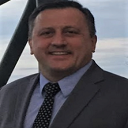
Biography:
Mr. Kuklinski serves as the Assistant Deputy Director for Global Operations at United States Strategic Command. Chris has over thirty years of experience serving in a variety of capacities in the nuclear, space, and command and control operations. He served as the Deputy Launch Director for six space launches from Vandenberg Air Force Base and the Director for Operations conducting space-based missile warning at Buckley Air Force Base Colorado.Mr. Kuklinski holds degrees from the University of Pittsburgh, Chapman University, University of Nebraska-Omaha, and King’s CollegeLondon.
Abstract:
This discussion focuses on extending deterrence principles beyond the 20th Century nuclear paradigm to address challenges within the space and cyberspace domains. It opens with the post-Cold War era, proceeds to explore the attributes of deterrence; conducts a comprehensive overview of the space and cyberspace domains; applies deterrence principles to assure the peaceful uses of the space and cyberspace domains; and concludes with a discussion on the erosion of protections for noncombatants through the evolution of warfare from the Industrial Age to the Information Age.
The author posits that in order to counter the effects of a constant state of war, deterrence in space and cyberspace must be executed as a campaign through all phases of conflict. The fundamental strategy of this campaign is to assume a position of strength. This is achieved by building a resilient architecture supporting both space and cyberspace domains. This architecture includes a complementary set of offensive and defensive capabilities intended to make the cost of engagement exceed the intended benefits.
Complementing the architecture are confidence building measures designed to prevent inadvertent escalation by creating channels to resolve issues stemming from the misinterpretation of an action, miscommunication of intent, and inadvertent or accidental application of effects. These measures also serve to resolve incidents purposefully initiated either by hubris or fear at the lowest phases of conflict. These confidence building measures include the need for productive relationships between rivals, the establishment of norms of behavior, and the exercising of restraint to prevent emotions from clouding the judgement of decision makers. Through the combination of these measures, harmful momentum is dampened allowing a state of strategic stability to flourish. In this state, sovereign nations can pursue national interests while adhering to established international norms.
Hub Urlings
Satellite Communications Innovation Addict| Netherlands
Title: LEO based satellite IoT services: next gen IoT connectivity for the world
Time : 12:45-13:15
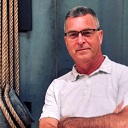
Biography:
Hiber LEO satellite IoT constellation that is going to offer low cost low power IoT connectivity on a global scale. In 2018 He provided a number of presentations giving an overview of current and new satellite-IoT connectivity providers (e.g. during the WMO Meteo Tech conference in Amsterdam). Emphasis was there on the launch of a number of LEO based systems end of 2018. Now in 2019 however these systems are on the verge of becoming operational and the idea is to provide an overview of the running services these systems provide alongside existing sat-iot operators
Abstract:
The presentation will consist of :1.An overview of the satellite-iot operators2.Focus on the new space Leo sat-iot players3.Market opportunities for Sat-IOT
Tetsuya Shimamura
Dean, Saitama Univeristy
Title: Recent PAPR Reduction Techniques for OFDM Systems
Time : 14:00-14:30
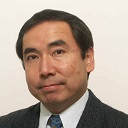
Biography:
Tetsuya Shimamura has completed his PhD from Keio University in 1991. He was Dean of Information Technology Centre at Saitama University and is a full professor currently there. He has published over 90 refereed journal articles and 220 international conference proceedings papers. He is an author or co-author of eight books, and a member of the organizing committee of several international conferences. He has received IEEE PACRIM, Gold Paper Award, in 2012, WSEAS MUSP, Best Paper Award, in 2013, and IEEE IFOST, Best Paper Award, in 2014. Also, he is a recipient of Journal of Signal Processing, Best Paper Award, in 2013, 2015, and 2016.
Abstract:
Orthogonal frequency division multiplexing (OFDM) is a promising multi-carrier modulation technique and has been widely used for wireless communications systems. OFDM is inherently high-bandwidth efficient, but we cannot avoid bandwidth inefficiency to remedy the increased peak-to-average power (PAPR) issue in OFDM systems. In this talk, we consider the bandwidth inefficiency issue of some PAPR reduction techniques for OFDM systems. Two schemes are introduced to cope with the issue. One is null-subcarrier’s switching approach and the other is subcarrier group modulation (SGM) approach. Especially, the latter one accomplishes bandwidth efficient communications. Some simulations results are shown and it is unveiled that both approaches are interesting and play an important role for OFDM systems.
NajibOdhah
Scientist,System Design, Germany
Title: Real-Time Wireless Communications for Industrial Automation
Time : 14:30-15:00
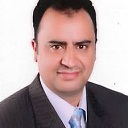
Biography:
Najib A Odhah received PhD from the Faculty of Electronic Engineering, Menoufia University, Menouf, Egypt, in 2013. He is currently an assistant professor in the Electrical Communications Engineering Department at Ibb University, Yemen. From 2015 to Now, he worked as a post-doctoral scientist in the Department of System Design, IHP research institute, Frankfurt (Oder), Germany. His research areas of interest include wireless communications, signal processing techniques for wireless communications, multiple antennas techniques for wireless communications, Multiple-Input Multiple-Output (MIMO) techniques (traditional, cooperative, and massive), power allocation algorithms for Orthogonal Frequency Division Multiplexing (OFDM) Systems (traditional and cognitive), Advanced Radio Resource Management (RRM) for wireless communications, digital signal processing, digital communications, Interference Cancellation and Interference Coordination (ICIC) techniques, channel estimation and equalization, game theory based optimization techniques for future 5G wireless communication systems, Machine-to-Machine (M2M) communications, Device-to-Device (D2D) communications, and 5G-Enabled Tactile Internet.
Abstract:
The advent of new wireless applications, especially industrial applications, have required new wireless network architecture design with new network management techniques. Industrial automation is one of the significant wireless applications that requires ultra-reliable and ultra-low latency wireless connectivity with high network availability. The upcoming Five Generation (5G) mobile wireless communication system is expected to satisfy the Ultra-Reliable and Low Latency Communications (URLLCs), in addition to the other two uses cases of enhanced Mobile Broadband (e-MBB) and massive Machine Type Communications (mMTC). Also, Tactile internet applications, in which real-time communications must be enabled to support haptic communications (i.e. touch and real-time control transmission) over the wireless communication network. Tactile internet will be the real future and will need End-to-End (E2E) network connectivity optimization to guarantee millisecond Round-Trip Delay (RTD) and millisecond network outage per day
Sudeep Giri
Middle Georgia State University, U.S.A
Title: An Extraterrestrial Approach To Additive Manufacturing: Revolutionizing 3D Printing Systems For Spaceflight Operations & Research
Time : 15:00-15:40
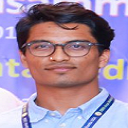
Biography:
Sudeep Giri is a 1st year college student pursuing Aviation Science and Management in the Advanced Flight career track at Middle Georgia State University. He is a student firefighter at the Cochran Fire Department in Cochran, GA and the founder of 3D Printing 4 Humanity, a 3d printing organization focused on research and humanitarian needs. He has interned with two 3d printing companies, 3D Printer Technology and Zager 3d Printing, focused on manufacturing prototypes and products for other companies and organizations like NASA, Lockheed Martin, and Delta Air Lines.
Abstract:
There is a need for increased advancement of 3d printing systems to develop potential extraterrestrial habitation, transport systems and tools for spaceflight operations and research. The possibilities of 3d printing are pretty much endless. From manufacturing prototypes to producing serviceable parts for real-time applications in today’s industries, 3d printing has already started to signify the future of research and manufacturing technology for the better of humanity on and off this world. The technology required to 3d print extraterrestrial devices and tools have been created, but a well developed system to research and manufacture properly working devices for spaceflight operations have yet to be discovered. With an international collaborative effort, 3d printing research focused on spaceflight operations may lead to productive solutions in making humans an interplanetary species
